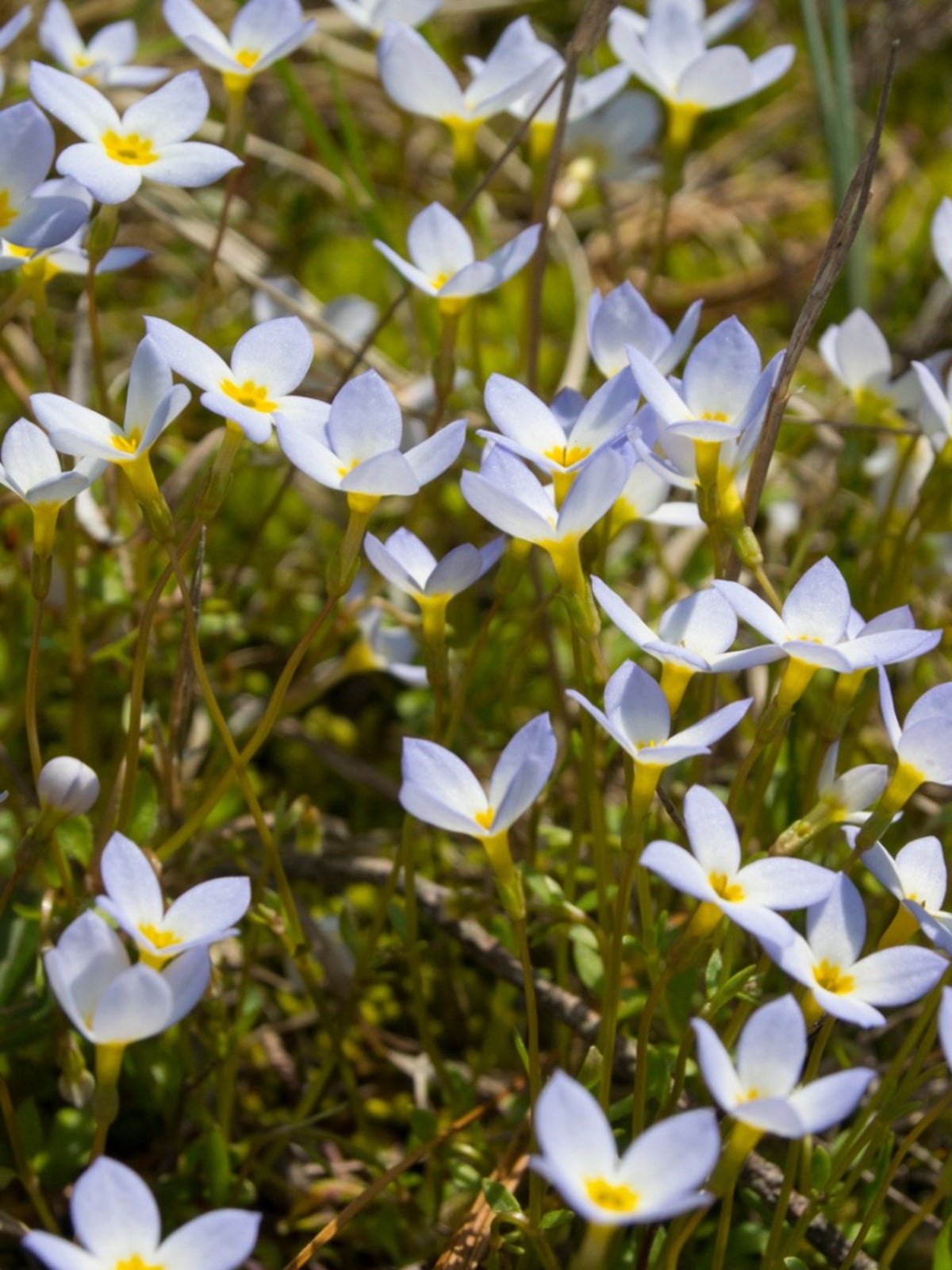Quaker Lady Bluets: Growing Bluets In The Garden


You may be pleasantly surprised to find growing bluets in a nearby woodland or popping up in other places in the landscape. If you look online to find out what they are, you may wonder, “Why are bluets called Quaker ladies?" Info on wildflower bluets says the petite little mounds of sky-blue flowers are so named because their shape is similar to that of the hats once worn regularly by women of the Quaker faith. Other info says they're called Quaker lady bluets because the pale color of the flower is similar to the shades of fabric used in making dresses worn by Quaker ladies. Whatever the reason for the name, finding wildflower bluets in your yard or garden is a charming addition.
Quaker Lady Bluets
The common name of wildflower bluets, of course, refers to the color of the tiny, mounding clumps of flowers, interpreted from the Latin (caerulea, from caeruleus). Also called azure bluets, some varieties are native to southern areas of Canada and Nova Scotia. The perennial flowers are readily visible in New England in spring and found as far south as Florida and Texas. The tiny flowers of Quaker lady bluets may also be in shades of white or pink, having yellow centers.
Uses for Bluets in the Garden
Quaker lady bluets self-seed abundantly and once you see a stand of them, you're likely to find more growing bluets as seasons pass. Wildflower bluets are commonly found in lightly shaded wooded areas, but as seeds are dispersed by winds and birds, you'll find them growing in other areas as well. Bluets in the garden are an effective groundcover under taller spring-blooming flowers. Botanically called Houstonia caerulea, Quaker lady bluets bloom most profusely in spring, but some flowering continues through summer and fall. Bare areas of the landscape appear covered with a blue carpet when masses of these flowers are in bloom. Easily transplanted, the gardener can use wildflower bluets to encircle steppingstones, line garden pathways or accompany other perennial wildflowers in the garden. To move clumps of the little flower to another area, simply dig them and replant on a cloudy day. They prefer moist, organic soil that is slightly acidic, such as the soil where they grow in shady woodlands. Plant bluets in sunny or shady locations, avoiding hot afternoon sun. When the dainty blooms appear in your garden, you'll be able to explain "Why are bluets called Quaker ladies," and possibly share a few clumps with gardening friends.
Gardening tips, videos, info and more delivered right to your inbox!
Sign up for the Gardening Know How newsletter today and receive a free copy of our e-book "How to Grow Delicious Tomatoes".

Becca Badgett was a regular contributor to Gardening Know How for ten years. Co-author of the book How to Grow an EMERGENCY Garden, Becca specializes in succulent and cactus gardening.
-
 Moody Blooms For Spring: 8 Types Of Black Flowers To Add Drama To Spring Displays
Moody Blooms For Spring: 8 Types Of Black Flowers To Add Drama To Spring DisplaysFrom midnight burgundies to inky violets, several types of black flowers can enrich and embolden a spring display. Try these brooding bloomers for a moody garden
By Tonya Barnett
-
 Can Snake Plants Live Outside? Everything You Need To Know For Snake Plants Al Fresco
Can Snake Plants Live Outside? Everything You Need To Know For Snake Plants Al FrescoSnake plants can live outside given the right conditions, but be careful that they don't take over! Learn the best way to use snake plants in your landscape.
By Mary Ellen Ellis